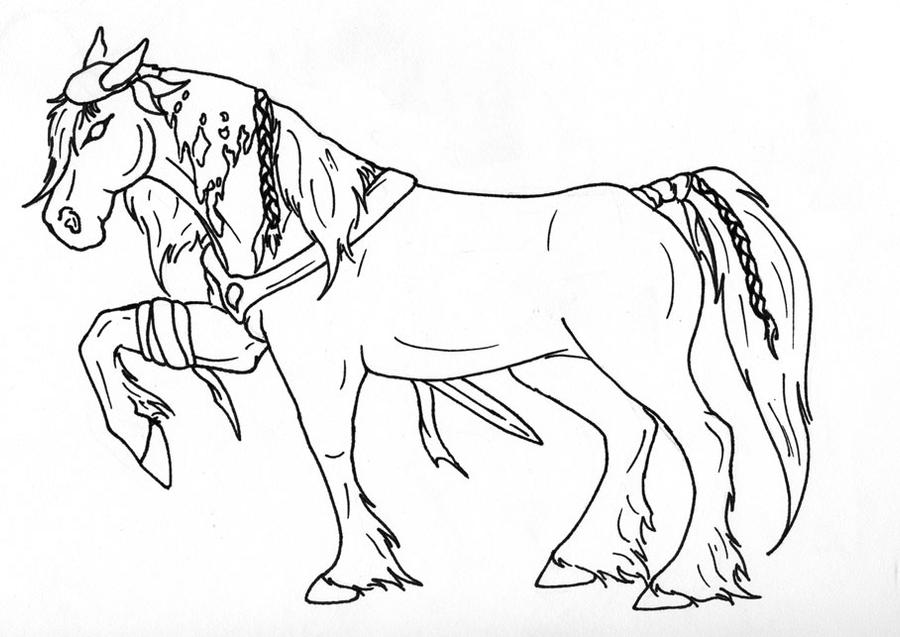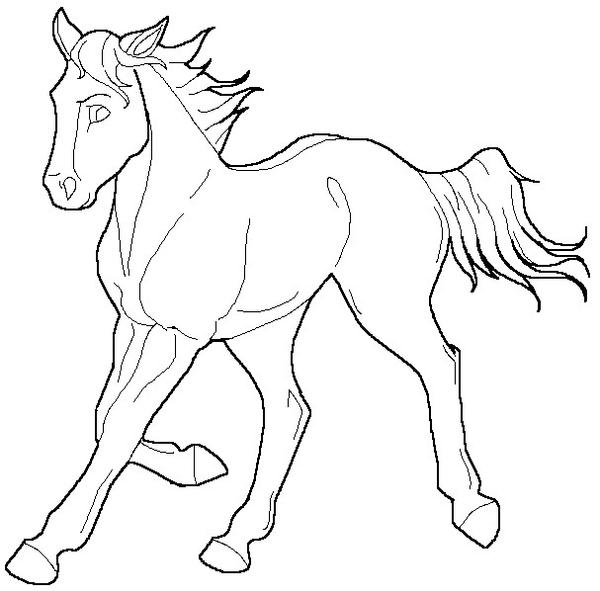Free Horse Pictures Biography
Source(Gogle.com.pk)Some artists make it seem utterly courageous to follow their own muse. Neil Young makes it seem like there's no other choice. For the last 45 years, Young has glanced at his options, shrugged for a moment, and lit off for the place that seemed right. Young has always kept his fans guessing, turning an array of stylistic corners — country twang here, poignant picking there, and a whole lot of blaring guitar rock everywhere between. It doesn't matter if the songs are personal confessions, allusive tales, or bouncy throwaways — since the mid-1960s Young has filled each with immediacy and passion, two hallmarks of a career that has been utterly influential and wildly fun to follow. He's like your weird old uncle — if your uncle were a rock & roll genius.
Young was born in 1945. As a child he moved with his mother Rassy Ragland to Winnipeg, Canada, after she divorced his father Scott Young, a well-known sports journalist and author. Neil played in several high school rock hands, including the Esquires and the Stardusters. He also began hanging out in local folk clubs, where he met musicians Stephen Stills and Joni Mitchell. Mitchell wrote "The Circle Game" after hearing "Sugar Mountain," Young's paean to youth. In the mid-1960s he moved to Toronto, where he began performing solo. In 1966 he and bassist Bruce Palmer joined the Mynah Birds (which included Rick James and had a deal with Motown Records); after that fizzled, he and Palmer drove to L.A. in Young's Pontiac hearse (it was nicknamed "Mort"). There Young and Palmer ran into Stills and another mutual friend, Richie Furay, and formed Buffalo Springfield, one of the most important folk-rock bands of the 1960s, who love of country music helped shape their overall sound. The Springfield recorded Young's "Broken Arrow," "I Am a Child," "Mr. Soul," and "Nowadays Clancy Can't Even Sing" — key titles of Young's early catalogue. But friction developed: the moody Young quit the band, only to rejoin and quit again, and in May 1968, after recording three albums, the band split-up for good.
Young connected with Joni Mitchell's manager, Elliot Roberts, and released his self-titled debut in January 1969; it was co-produced by Jack Nitzsche. Around the same time Young began jamming with a band called the Rockets made up of drummer Ralph Molina, bassist Billy Talbot, and guitarist Danny Whitten. He renamed them Crazy Horse, and they backed him on the killer guitar album Everybody Knows This Is Nowhere (Number 34, 1969), which contains three of Young's most famous songs: "Cinnamon Girl," "Down by the River," and "Cowgirl in the Sand." The singer once told a journalist that they were all written in one day while he was stricken with a fever from the flu. The album went gold (and much later, platinum), and Young found that he had a backing group who he could rely on for decades. In 1970 he accepted an invitation to join Crosby, Stills & Nash. In the spring of that year, CSN&Y released the much-acclaimed Déjá Vu.
All of a sudden, Young work was ubiquitous. His third solo album, the masterful After the Gold Rush (Number 8, 1970), included Crazy Horse and 17-year-old guitarist Nils Lofgren. The album went gold and yielded the single "Only Love Can Break Your Heart" (Number 33, 1970). Déjà Vu was still a strong seller, and it was becoming obvious that Neil Young was one of rock's most fertile artists. Harvest (Number One, 1972) was written largely while Young was recuperating from a slipped disc and recorded with an assemblage of studio musicians dubbed the Stray Gators; it featured the Number One single "Heart of Gold" and made the hippie singer-songwriter a superstar.
By the release of their double-disc live album, Four Way Street, in the spring 1971, CSN&Y had broken up. In 1972 Young made a cinema vérité film, Journey Through the Past, directing under the pseudonym Bernard Shakey; the movie and its soundtrack were panned by critics. Young confused fans further with Time Fades Away (Number 22, 1973), a rough-hewn live album recorded with the Stray Gators, including Nitzsche (keyboards), Ben Keith (pedal steel guitar), Tim Drummond (bass), and John Barbata (drums).
In June 1975 Young released a bleak, ragged album recorded two years earlier, Tonight's the Night (Number 25). Its dark tone reflected Young's emotional upheaval following the drug deaths of Crazy Horse's Danny Whitten in 1972 and CSN&Y roadie Bruce Berry in 1973. It's often cited as one of Young's most harrowing albums.
In November 1975 Young released the harder-rocking Zuma (Number 25), with Crazy Horse, an emotionally intense work that included the sweeping "Cortez the Killer." Crazy Horse now included Talbot, Molina, and Frank "Poncho" Sampedro (rhythm guitar). In 1976 Young recorded Long May You Run (Number 26) with Stills. The album went gold, and the two old friends launched a tour. But Young bowed out with only half the dates done, informing Stills of his parting via telegram.
In June 1977 Young was back on his own with the gold American Stars 'n Bars (Number 21), again a more accessible effort, with Linda Ronstadt and Nicolette Larson supplying backing vocals. Compiled by Young, the three-LP Decade was a carefully chosen, not entirely hit-centered compilation. Comes a Time (Number 7, 1978) had country echoes and went gold.
In fall 1978 Young did an arena tour entitled Rust Never Sleeps, performing half the show on solo piano or guitar and the other half (which was pointedly loud) with Crazy Horse, amid a stage set that featured oversized mock-ups of mics, amps, and speakers. In June 1979 he released Rust Never Sleeps (Number Eight) with songs previewed on the tour, including "My My Hey Hey (Out of the Blue)," which conflated the worlds of Elvis Presley and Johnny Rotten. (The same song was reprised at the end, as "Hey Hey My My [Into the Black].") The album also featured "Sedan Delivery" and "Powderfinger," two titles Young had offered Lynyrd Skynyrd, though the band didn't record them. (Back in 1974 Skynyrd had written proud "Sweet Home Alabama" as an answer to Young's cranky "Southern Man.") In November 1979 Young came the inevitable Live Rust (Number 15), a double-LP culled from the previous shows and the soundtrack to a film of the tour, entitled Rust Never Sleeps. All of the Rust activity was some of the most potent music Young ever made.
The 1980s were a particularly strange and erratic decade for the singer, even by his own unpredictable standards. Ultimately, it seemed he was going on a genre-hopping spree. Right before the presidential election in 1980, he issued Hawks and Doves (Number 30), an enigmatic state-of-the-union address, with one side of odd acoustic pieces and the other of rickety country songs. A year later he released Re*ac*tor (Number 27), a bruising hard-rock LP. In 1982 he moved to the Geffen label and released Trans (Number 19), which introduced his audience to what he called "Neil 2"; the singer fed his voice through a computerized Vocoder and sang songs with compu-speak titles such as "Sample and Hold." It was adventurous, and he explained that he was trying to put himself in the place where he could communicate with his speech-impaired son Ben who was born with cerebral palsy (as was his old brother Zeke). He toured arenas as a solo performer when the album was released, singing his most-requested songs, covering "backstage" action on a large video screen, and singing along with his Vocoderized video image on songs from Trans.
Young's wanderlust got more extreme with Everybody's Rockin', a rockabilly album recorded and performed with a group he dubbed the Shocking Pinks. Despite an amusing video for the song "Wonderin'," all this stylistic swerving started to irritate longtime fans, and the records began sliding down the charts. Old Ways was a country album with guest spots by Willie Nelson and Waylon Jennings. Landing on Water used synthesizers on standard rock songs. Life reunited him with Crazy Horse in lackluster performances. The lack of commercial success created a disastrous relationship with Geffen — ultimately the imprint slapped him with a $3 million lawsuit for making "unrepresentative" music —.
Young kept jumping genres, returning to his former label Reprise for This Note's For You, a horn-based blues/R&B album. The video for the title song attacked artists who allowed their music to be licensed for TV ads; MTV avoided airing it, although it earned the network's Music Video Award for Best Video of the Year.
In 1987, after appearing with his old cohorts in CSN at a Greenpeace benefit, Young briefly rejoined the group for the 1988 CSN&Y album American Dream (Number 16). None of Young's 1980s albums was particularly well received beyond the artist's loyal core audience, though some — such as Trans— had captured critics' interest. Many wrote off the bulk of this era's work as typical Neil Young flakiness.
Free Horse Pictures for Kids Black and White to Color Funny Hd Wallpapepr Images Pics
Free Horse Pictures for Kids Black and White to Color Funny Hd Wallpapepr Images Pics

Free Horse Pictures for Kids Black and White to Color Funny Hd Wallpapepr Images Pics

Free Horse Pictures for Kids Black and White to Color Funny Hd Wallpapepr Images Pics

Free Horse Pictures for Kids Black and White to Color Funny Hd Wallpapepr Images Pics

Free Horse Pictures for Kids Black and White to Color Funny Hd Wallpapepr Images Pics

Free Horse Pictures for Kids Black and White to Color Funny Hd Wallpapepr Images Pics

Free Horse Pictures for Kids Black and White to Color Funny Hd Wallpapepr Images Pics

Free Horse Pictures for Kids Black and White to Color Funny Hd Wallpapepr Images Pics

Free Horse Pictures for Kids Black and White to Color Funny Hd Wallpapepr Images Pics
Free Horse Pictures for Kids Black and White to Color Funny Hd Wallpapepr Images Pics
Free Horse Pictures for Kids Black and White to Color Funny Hd Wallpapepr Images Pics
Free Horse Pictures for Kids Black and White to Color Funny Hd Wallpapepr Images Pics
Free Horse Pictures for Kids Black and White to Color Funny Hd Wallpapepr Images Pics

No comments:
Post a Comment